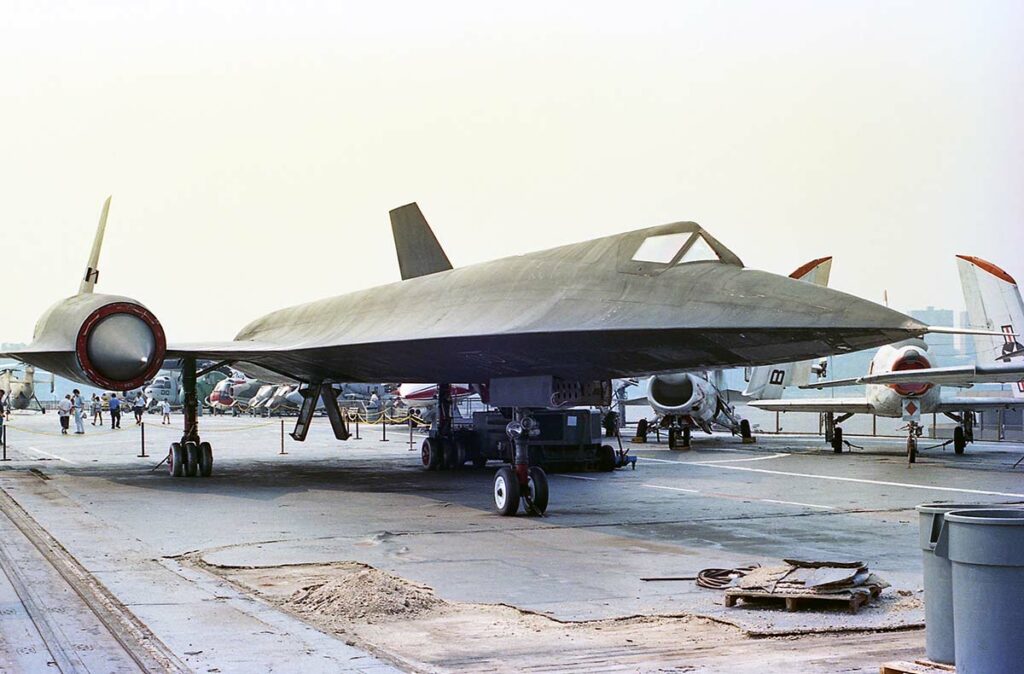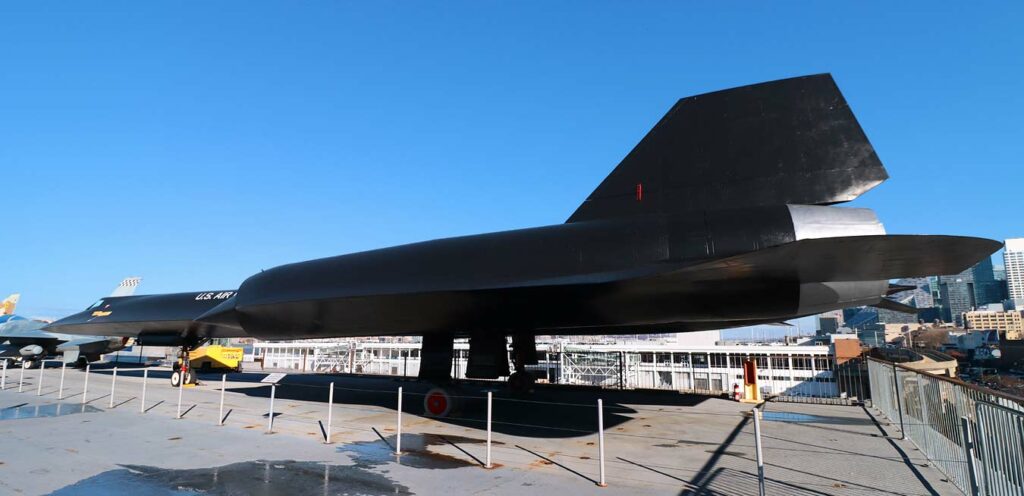The Lockheed A-12 Archangel: a high-altitude, Mach-3+ reconnaissance aircraft, pivotal in Cold War espionage, precursor to the renowned SR-71.
In Brief
The Lockheed A-12, codenamed Archangel, was a reconnaissance aircraft developed by Lockheed’s Skunk Works division, primarily for the CIA. As the precursor to the SR-71 Blackbird, it was designed for Mach 3+ flight at high altitudes, enabling it to outrun threats and gather crucial intelligence. The aircraft featured innovative technology, including titanium construction and early stealth characteristics, to reduce radar detectability. It was equipped with sophisticated reconnaissance systems for signal intelligence gathering and high-resolution photography. Operating from 1962 until its retirement in 1968, the A-12 played a crucial role in Cold War reconnaissance missions.

History of the Development of the Lockheed A-12 (Archangel-12)
In the late 1950s, the escalating tensions of the Cold War underscored the need for reliable, high-speed aerial reconnaissance to monitor Soviet missile activity. The U-2 Dragon Lady, then the primary reconnaissance aircraft, was increasingly vulnerable to Soviet air defenses. The CIA initiated a program for a successor, leading to the development of the Lockheed A-12.
The A-12 program, codenamed “Oxcart,” was launched by the CIA in 1959, with Lockheed’s Skunk Works division under Clarence “Kelly” Johnson taking the helm. The aircraft was designed to be the fastest, highest-flying manned aircraft of its time, intended for strategic overflights, completely out of reach of enemy interceptors and surface-to-air missiles. The first A-12 took flight on April 30, 1962, marking the beginning of a new era in aerial reconnaissance.
Design of the Lockheed A-12 (Archangel-12)
The Lockheed A-12’s design was revolutionary, featuring a sleek, aerodynamic shape to minimize radar cross-section and heat signature, crucial for its survivability at Mach 3+ speeds. Constructed primarily of titanium to withstand extreme temperatures, it incorporated advanced materials, including radar-absorbent composites.
The aircraft’s fuselage was designed to carry large fuel loads and sophisticated reconnaissance equipment, including high-resolution cameras and side-looking radar. Its chines and canted vertical stabilizers were early implementations of stealth technology, reducing radar detectability. However, the A-12’s emphasis on speed and stealth came with drawbacks, such as a challenging takeoff and landing behavior and high maintenance demands due to its exotic materials and complex systems.
Performance of the Lockheed A-12 (Archangel-12)
The A-12’s performance was unparalleled at the time. Powered by twin Pratt & Whitney J58 turbojet engines, it could reach speeds above Mach 3.2 and altitudes over 85,000 feet. The aircraft’s range was approximately 2,500 miles without aerial refueling, but it could extend missions with in-flight refueling capabilities.
This exceptional performance allowed the A-12 to conduct rapid, high-altitude reconnaissance missions over hostile territory, with a minimal risk of interception. The combination of its speed, altitude, and low radar signature made the A-12 an elusive target for the most advanced Soviet air defenses of the era.
Variants of the Lockheed A-12 (Archangel-12)
The A-12 program produced several variants, including the original A-12, the YF-12A interceptor prototype, and the M-21, which was designed to launch the D-21 drone. Each variant served different roles, from strategic reconnaissance to high-speed interception and unmanned reconnaissance, demonstrating the versatility of the A-12 design.

Military Use and Combat of the Lockheed A-12 (Archangel-12)
The A-12 was operated exclusively by the CIA and was never officially engaged in combat. Its missions were highly classified, focusing on overflying Soviet territories, North Vietnam, and other hotspots during the 1960s. The aircraft gathered vital intelligence on Soviet missile sites, military installations, and other strategic targets, significantly contributing to U.S. national security during the Cold War.
The A-12’s operational career was relatively short-lived, as advances in satellite reconnaissance and the development of the SR-71 Blackbird (a derivative of the A-12) led to its retirement in 1968. Despite its brief service life, the A-12 set several flight performance records and proved the concept of high-speed, high-altitude reconnaissance.
The Lockheed A-12 Archangel represented a monumental leap in aviation technology, setting the foundation for future reconnaissance aircraft and stealth technology. Its innovative design, remarkable performance, and significant contributions to Cold War intelligence gathering underscore its pivotal role in aerial reconnaissance history. The A-12’s legacy is reflected in its successors and the ongoing evolution of stealth and high-speed aviation technologies.
Back to the Spy Planes section.